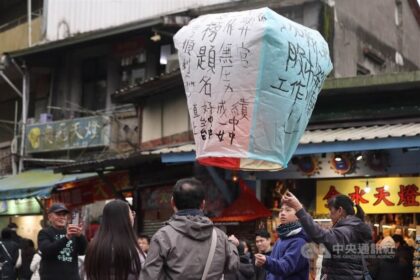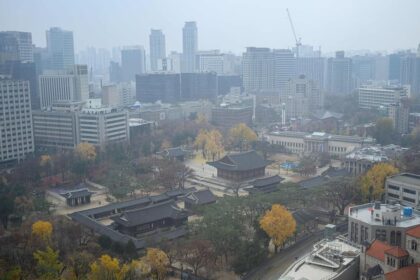Hong Kong rises in global pension index as Singapore keeps its lead
Hong Kong’s retirement system climbed in the latest global rankings, registering one of the biggest improvements worldwide while still sitting behind Singapore. The Mandatory Provident Fund, the city’s compulsory retirement savings scheme, earned a B grade with a score of 70.6 out of 100, up from 63.9 a year earlier. The upgrade places Hong Kong alongside several European systems with similar grades, reflecting progress in investment oversight and member protection. It does not close the gap with Singapore, which remains in the B+ band near the top of the global table.
The rise comes at a time when Hong Kong’s MPF assets have grown to about HK$1.5 trillion (about US$195 billion), helped by strong market performance and regular contributions from more than four million members. The regulator has pursued a member centric approach, prioritising lower administrative costs, better digital access, and stronger governance. These changes are starting to show up in international assessments that score pension systems on adequacy, sustainability, and integrity.
Singapore continues to lead in Asia thanks to higher mandatory savings, guaranteed interest rates on balances, and a system that channels savings into monthly payouts in retirement. Hong Kong’s MPF has narrowed the gap on governance and efficiency, but it still faces questions about whether current contribution levels and withdrawal patterns will supply enough income across a full retirement.
What the new ranking tells us
The Mercer CFA Institute Global Pension Index evaluates national retirement systems on three pillars. Adequacy measures whether benefits and savings likely replace enough income in retirement. Sustainability looks at funding sources, contribution levels, demographic pressures, and coverage across the workforce. Integrity examines regulation, governance, transparency, fees, and member safeguards. A B grade points to a sound structure with several good features and clear room to strengthen adequacy and sustainability. Only a handful of systems, such as those in the Netherlands, Iceland, Denmark, and Israel, receive an A grade.
How Hong Kong’s MPF works
Hong Kong’s Mandatory Provident Fund is a mandatory, defined contribution arrangement launched in 2000. Most employees and self employed workers must participate. Contributions are invested in funds run by private trustees, and the eventual pot is determined by how much is contributed and how markets perform. The MPF was designed to help workers build a basic nest egg, complementing personal savings and any voluntary schemes offered by employers.
Contributions and coverage
Employers and employees typically contribute 5 percent each of relevant income, subject to a lower threshold and a monthly cap. The cap is set at HK$30,000 of income, which means the maximum mandatory contribution is HK$1,500 from the employee and HK$1,500 from the employer each month. Self employed people make similar contributions. The scheme covers local workers and foreign employees working in Hong Kong who meet the income requirements, which broadens participation across the economy.
Withdrawals and investment choices
MPF savings are generally available at age 65. Members can withdraw a lump sum, take partial withdrawals, or opt for regular payments through retirement products. For members who do not actively choose investments, contributions flow into the default investment strategy, which splits money between a core accumulation fund and an age 65 plus fund that gradually lowers risk as members get older. Over the year to September 2025, the MPF equity fund delivered a net return of 18.8 percent, and the mixed assets fund returned 10.6 percent. The default funds returned 9.8 percent and 3.4 percent, respectively, illustrating how asset allocation shapes outcomes. Since inception, the overall annualised net return across the MPF system is about 2.6 percent, which reflects both fees and market cycles.
How Singapore’s CPF differs
Singapore’s Central Provident Fund is a broad social security and retirement system that is more centralised and comprehensive. Workers aged 55 and below typically contribute 20 percent of wage income, and employers add 17 percent, for a combined rate of 37 percent up to a monthly salary cap of S$6,800. Savings are split into separate accounts for ordinary needs, healthcare, and retirement. The government provides guaranteed base interest, which helps members build balances steadily regardless of market volatility.
Higher contributions, guaranteed base return
CPF balances in the Ordinary Account earn a risk free 2.5 percent per year. The Special, MediSave, and Retirement Accounts earn 4 percent, with extra interest for larger balances and older members. These guaranteed rates reduce uncertainty and increase the likelihood that members reach target balances by retirement. The higher mandatory contribution rate, compared with Hong Kong’s 10 percent total, is a major reason Singapore tends to score better on adequacy.
Eligibility and use
CPF covers Singapore citizens and permanent residents. Funds can be used for housing purchases, approved investments, medical expenses, and retirement income. At retirement, members typically channel savings into CPF LIFE, a national annuity that provides lifelong monthly payouts. The system prioritises steady income streams over one time withdrawals, which supports better consumption smoothing over longer life spans.
Why Hong Kong improved this year
The catalyst for Hong Kong’s jump in the global index is a package of reforms led by the new eMPF platform, a centralised digital backbone that began rolling out in June 2024. The platform consolidates administration from 12 trustees onto one non profit system. Early migration phases involved more than 11,000 employer accounts and over 460,000 member accounts, with most transactions completed electronically. The target is full transfer of all accounts by the end of 2025.
The eMPF is expected to cut administrative fees sharply. Officials project a 36 percent reduction in the first two years, with cumulative savings of HK$30 billion to HK$40 billion over a decade. That translates into a potential 41 percent to 55 percent decline in costs for members. After onboarding to the centralised platform, many schemes could reduce fees by as much as 57 percent. Lower costs compound over time, so even small percentage drops can add meaningful dollars to retirement balances after years of contributions.
Regulators are also widening the investable universe. MPF funds can increase allocations to real estate investment trusts on approved exchanges in Singapore, Japan, Canada, France, and the Netherlands. Plans are underway to allow investments in REITs listed in Shenzhen and Shanghai. At the same time, officials continue to bar MPF funds from investing in cryptocurrencies, citing the risks for a compulsory savings program. Tax deductible voluntary contributions are growing, with accounts tripling in five years and cumulative contributions exceeding HK$11 billion by the end of 2024.
Market performance has provided a tailwind. MPF assets reached a record of around HK$1.53 trillion in September, up from about HK$1.29 trillion at the end of the previous year. The bulk of the increase came from net investment returns. That momentum builds confidence that disciplined contributions, time in the market, and lower fees can work together to lift retirement savings.
Ayesha Macpherson Lau, the chairman of the Mandatory Provident Fund Schemes Authority, said recent results highlight the benefits of staying the course with regular contributions and diversified investments.
“The figures underscore the MPF’s ability to help members accumulate retirement savings through regular contributions, continuous investments, and the effects of compounding over time.”
An MPFA spokesman underscored the program’s role in basic retirement protection at a citywide level.
“The MPF is a sound retirement savings system that plays a vital role in enhancing basic retirement protection for the working population in Hong Kong.”
Not everything has gone smoothly. Some users reported early glitches during migration to the new digital platform, such as log in difficulties and confusion around certain contribution types. The operator increased staffing, refined user interfaces, and stepped up training and support to handle issues as more members move over in phases.
Where Hong Kong still trails Singapore
The single biggest difference is the size of mandatory contributions. A Hong Kong employee earning HK$30,000 per month will see HK$1,500 deducted and HK$1,500 paid by the employer into MPF. In Singapore, a worker at the contribution cap of S$6,800 can see as much as S$2,516 flow into CPF each month, split between employer and employee. Over a career, that gap compounds into very different account balances even before investment returns are considered.
Investment design also contributes to the gap. CPF offers guaranteed base interest on large parts of a member’s savings, which reduces sequence of returns risk near retirement. MPF returns depend on markets. While equities and mixed asset funds can deliver stronger performance in good years, they can also fall during downturns. The system’s lifetime annualised net return of about 2.6 percent reflects this volatility and the effect of fees. The eMPF reforms aim to lower costs materially, but fees in Hong Kong have historically been higher than in tightly administered public systems.
How retirees draw their money matters as well. In Hong Kong many members take a lump sum at age 65, which can create a risk of running down savings too quickly. International assessments have encouraged the city to nudge members toward steady income streams, for instance through annuities or drawdown products that provide a monthly payout. Policy changes in recent years have added more decumulation options and tax incentives, yet adoption is still developing.
Structure is another point of contrast. Hong Kong’s framework relies on multiple private trustees and a wide range of funds. That fosters competition and choice, but it can be complex for ordinary members to navigate. The eMPF platform simplifies administration and promises lower fees across providers, although investments themselves remain managed by individual trustees. Singapore’s CPF, by comparison, is centralised with standardised rules, which makes for more consistent experiences but less personal choice in investments.
Risk and regulation in focus
Recent industry discussions highlighted a technical rule that could have real investment consequences. Under local regulations, MPF funds may not invest more than 10 percent of assets in US Treasuries unless the United States holds a top tier AAA credit rating from an approved agency. After one major downgrade earlier this year, only one approved rater still assigns the highest grade. The MPF regulator asked trustees to prepare contingency plans in case the last AAA rating is removed. If that happened, some funds that track widely used government bond indices could need to shift allocations toward other AAA issuers, such as Germany or Singapore. The episode shows how strict guardrails can affect portfolios, even for the safest global assets.
Market cycles also matter. Hong Kong’s MPF endured a difficult patch heading into 2023, with losses that weighed on member accounts, followed by a rebound. This is common for defined contribution plans, where timing and diversification are crucial. The default investment strategy aims to smooth that path by gradually lowering risk as members age. The regulator advises members who are unsure of how to choose funds to consider the default option, which invests across global stocks and bonds with automatic rebalancing over time.
Voices from the industry
Sally Wong, chief executive of the Hong Kong Investment Funds Association, said rules and benchmarks need to reflect market realities, especially when they can trigger unintended consequences for member portfolios.
“The regulatory framework needs to move with the times and take into account changing macro and structural trends.”
Cheng Yan chee, managing director of the MPF regulator, has outlined the cost benefits of the eMPF platform and steps to improve the onboarding experience. He has also backed broader but prudent diversification, such as expanding access to real estate investment trusts while keeping high risk assets like cryptocurrencies outside the MPF universe.
Key Points
- Hong Kong’s MPF climbed to a B grade with a score of 70.6, up from 63.9, marking one of the largest improvements in Asia.
- Singapore remains ahead in Asia with a B+ grade and scores in the high 70s, anchored by higher mandatory savings and guaranteed interest.
- MPF assets reached about HK$1.53 trillion, lifted by strong investment returns and regular contributions.
- The eMPF platform began rolling out in June 2024 and is expected to cut administration fees by about 36 percent in the first two years and by 41 to 55 percent over ten years.
- MPF mandatory contributions are typically 5 percent from employees and 5 percent from employers, capped at HK$30,000 of monthly income; CPF contributions are up to 20 percent from employees and 17 percent from employers, capped at S$6,800.
- CPF pays guaranteed base interest of 2.5 percent on Ordinary Account balances and 4 percent on Special, MediSave, and Retirement Accounts; MPF returns are market based with a lifetime annualised net return near 2.6 percent.
- Hong Kong is expanding permissible MPF assets, including more REITs, while keeping cryptocurrencies off limits.
- MPF trustees were asked to prepare contingency plans in case the US loses its last AAA rating under local rules limiting Treasury exposure.
- Areas flagged for improvement include higher retirement income adequacy, greater use of income stream products at retirement, and continued fee reductions as eMPF onboarding progresses.












